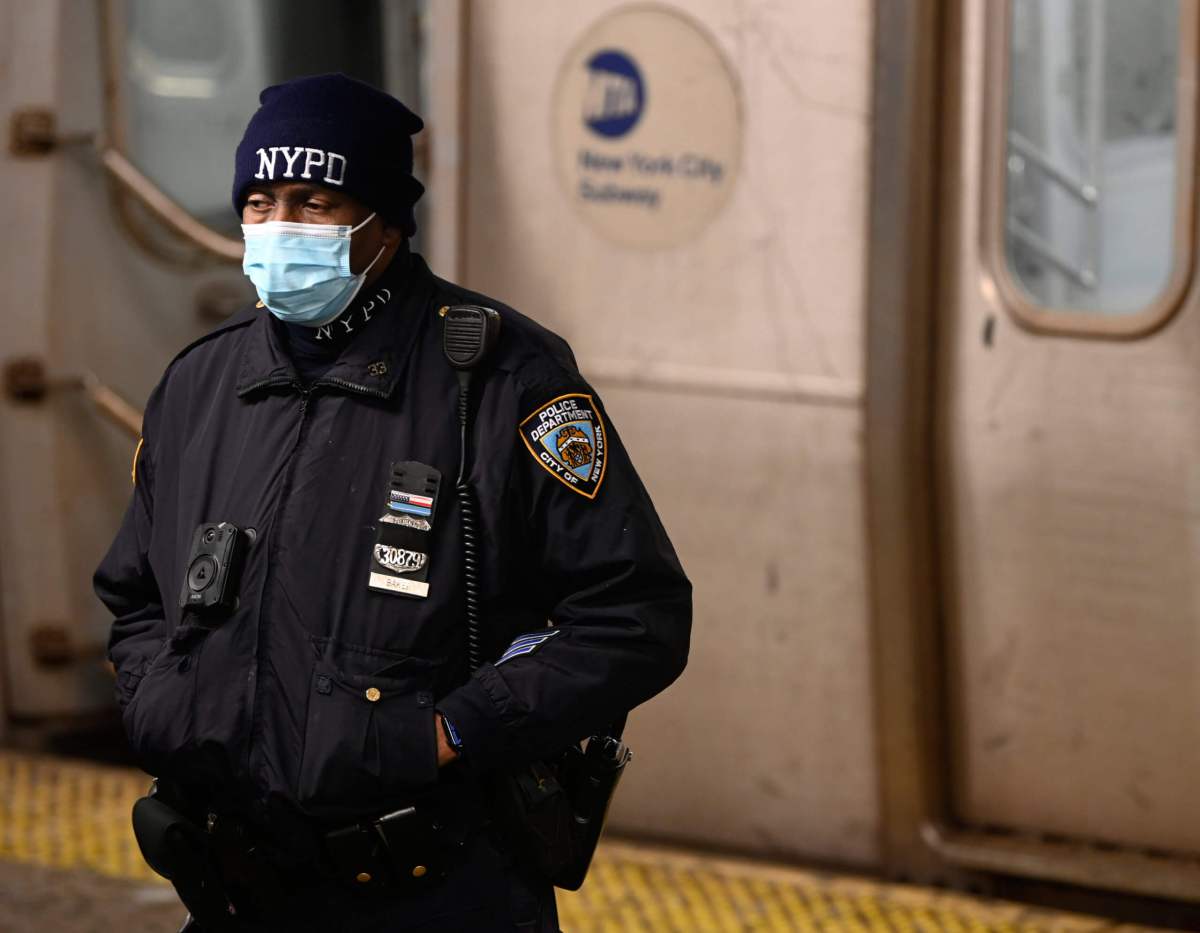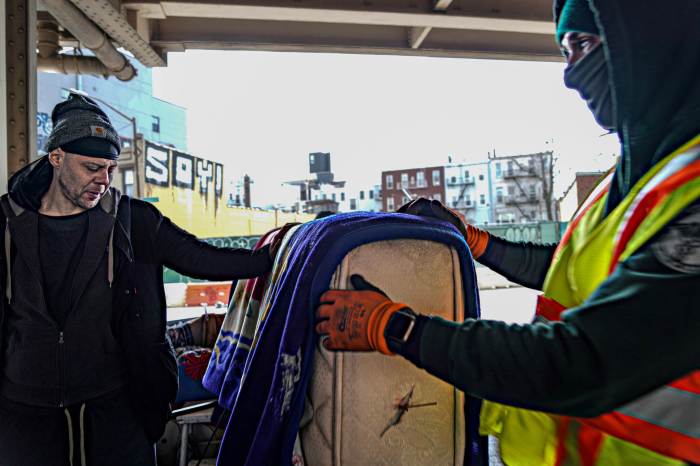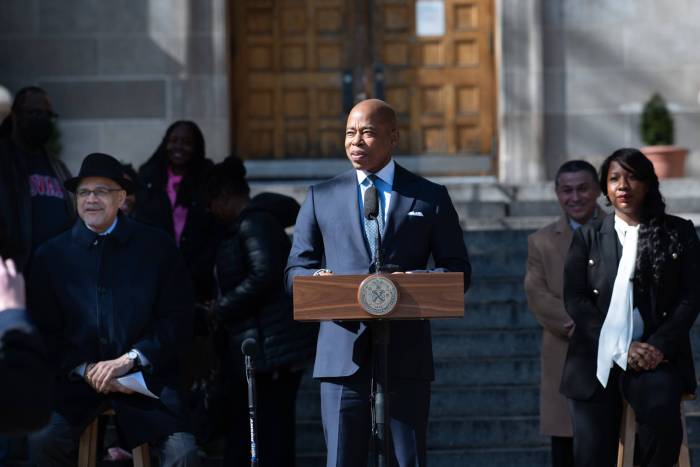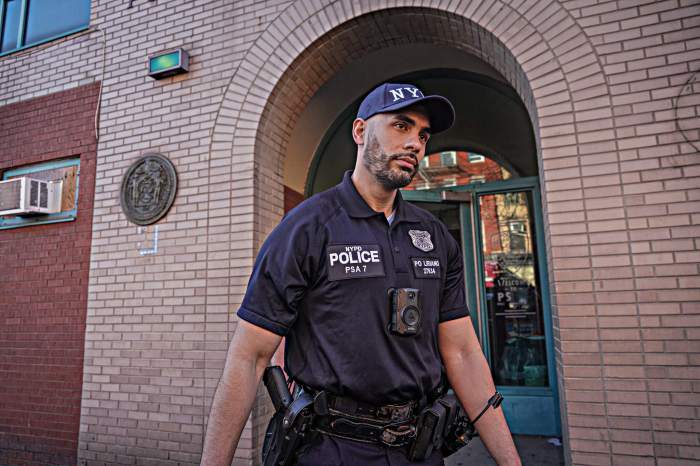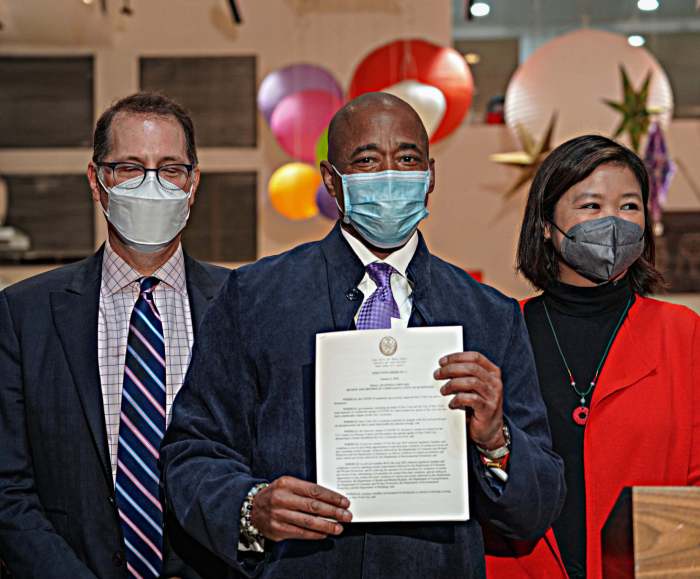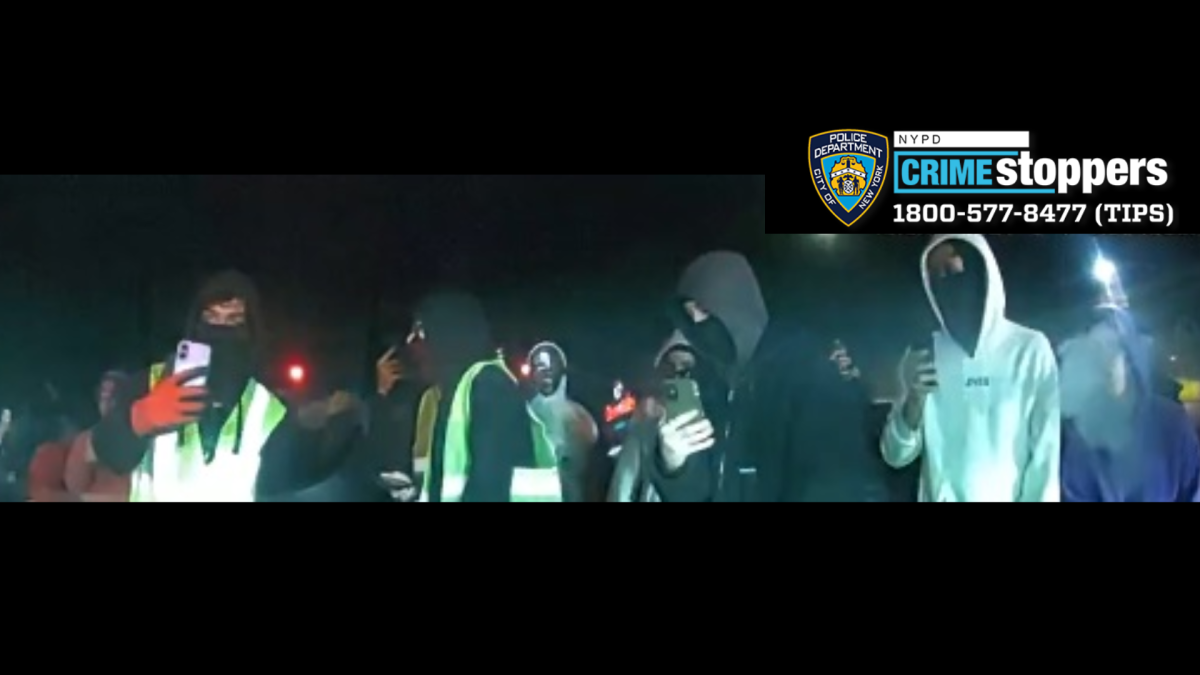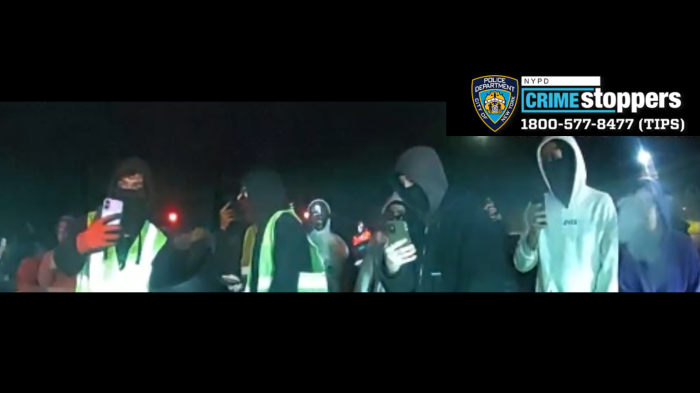Mayor Eric Adams, Commissioner Keechant Sewell, and Chief of NYPD Transit Bureau Jason Wilcox announced the next phase in their Subway Safety Plan—single NYPD transit patrols and an MTA subway rider safety awareness campaign.
One initiative in Adams’ plan looks to reinstate single NYPD patrols in the subway–a controversial form of policing that no longer requires two officers to survey an area but rather splits them up in order to cover more ground. While this is designed to increase the perception of a bigger NYPD presence by spreading out the blue uniform, the policy has received some push back from the Police Benevolent Association due to what they call patrol stretching, which the union believes creates safety risks.
Adams defends his plan, citing his known service as an officer as something that was necessary. He stated that the night prior, the NYPD rolled out this new system of policing, and he is impressed with the work so far.
“One thing you know about me, I would not have anyone do a job that I’m not willing to do myself,” Adams said. “During the overnight hours, we will have police officers that are doing train patrol, you will have two officers on the train, but they won’t be standing together. One will have the back end and walkthrough, and another will have the front end and walkthrough to make sure that during the overnight hours they will have protection if there is a need for service,” he added.
Commissioner Sewell also believes this plan will allow the NYPD to cover more ground in the mass transit system, and with the creation of increased police presence, she believes riders and MTA staff will feel safer. In January, the Subway Safety Plan outlined the deployment of 1,000 additional officers on trains and subway platforms.
“These deployments provide vital coverage across the entire system, and now we are extending that coverage even further. The Transit Patrol Plan will be intelligence driven, adaptable to shifting crime trends, and based on real time crime conditions in the transit system. The goal is enhanced crime prevention and deterrence not merely a response. In realizing that goal, it requires every available resource we have,” Sewell said.
The officers performing solo train patrols will stay within one district, patrolling the lines and stations they are most familiar with, explained Chief of NYPD Transit Bureau Jason Wilcox. While they are separated from their partners, officers will still be kept at a close proximity to allow for quick backup and within accessible range of their supervisors. They will enter the trains on opposite ends but meet in the middle during their solo patrols.
While Adams is concentrating on a “smart way of deploying officers,” as he says, he also implores the public to be smart as well when riding the subway. Adams recalls seeing a few female passengers sitting isolated in a train car to which he urges New Yorkers to not do. Instead, he says try to sit where the conductor is located–this area is easy to spot from the subway platform since there is a white bar with black stripes that marks where the conductor should be when the train stops.
“We’re going to move with the MTA to put in place a massive campaign on how to be a safe passenger. Many people don’t know the best place to stand during the late hours is in the conductor’s position. There are zebra stripes near the ceiling on a bar that tells you where a conductor’s position is. We need to educate people to do that. While I was out, I saw women passengers in isolated areas standing alone. That is just unsafe. So, we must play a role of educating passengers how to be partners in safety, how to be aware, how to be conscious, how to use our system in a fair and a safe way,” Adams said.
Adams clarified that New Yorkers could stand and sit, within the rules of the MTA, wherever they want on a train or platform.
“What I’m asking all passengers to do are the things that I learned as a passenger and a former transit police officer is how do you ride safely? We all should be able to ride safely. But I say this over and over again: Don’t live life the way it ought to be. Live it the way it is until we get it to where it ought to be. Right now, you ought not to be in an unsafe place in the system,” Adams said.



